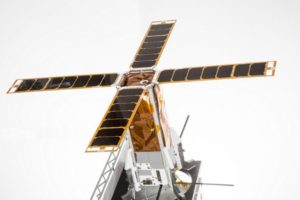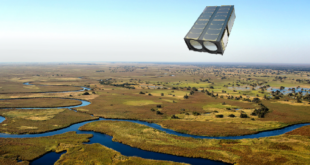
Ben-Gurion University (BGU) researchers in Israel have developed a new satellite imaging system that could revolutionize the economics and imagery available from space-based cameras and even Earth-based telescopes.
“This is an invention that completely changes the costs of space exploration, astronomy, aerial photography, and more,” says Angika Bulbul, a BGU Ph.D. candidate under the supervision of Prof. Joseph Rosen in the BGU Department of Electrical and Computer Engineering.
In a paper published in the December 2018 issue of Optica, the researchers demonstrate that nanosatellites the size of milk cartons arranged in a spherical (annular) configuration were able to capture images that match the resolution of the full-frame, lens-based or concave mirror systems used on today’s telescopes.
“Several previous assumptions about long-range photography were incorrect,” Bulbul says.
“We found that you only need a small part of a telescope lens to obtain quality images. Even by using the perimeter aperture of a lens, as low as 0.43 percent, we managed to obtain similar image resolution compared to the full aperture area of mirror/lens-based imaging systems. Consequently, we can slash the huge cost, time and material needed for gigantic traditional optical space telescopes with large curved mirrors.”
To demonstrate the synthetic marginal aperture with revolving telescopes (SMART) system capabilities, the research team built a miniature laboratory model with a circular array of sub-apertures to study the image resolution and compare them with full lens imagery.





